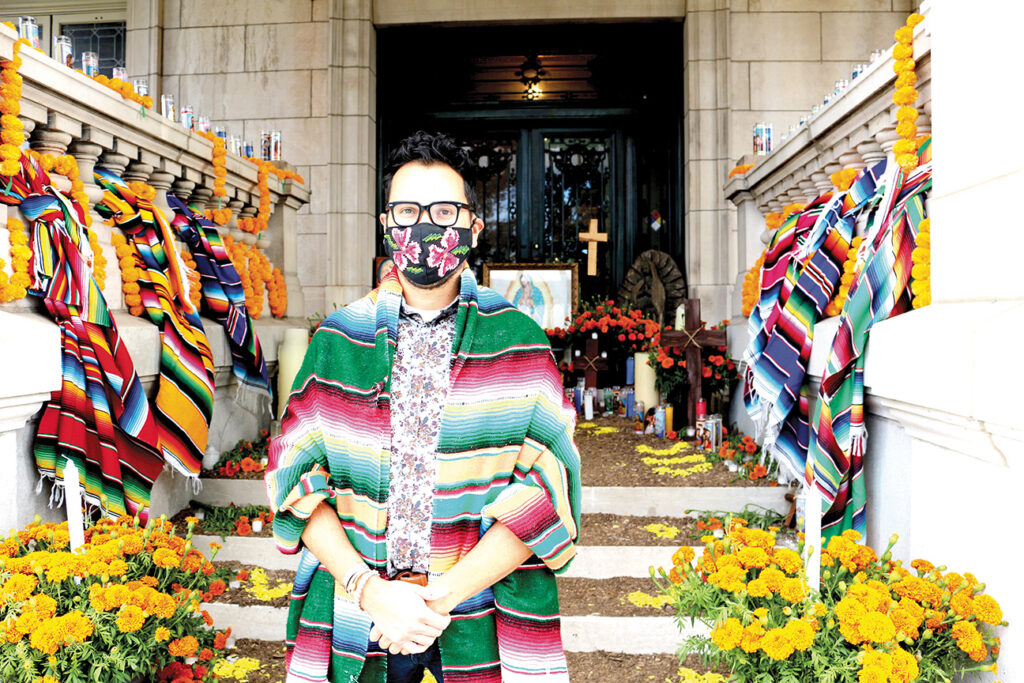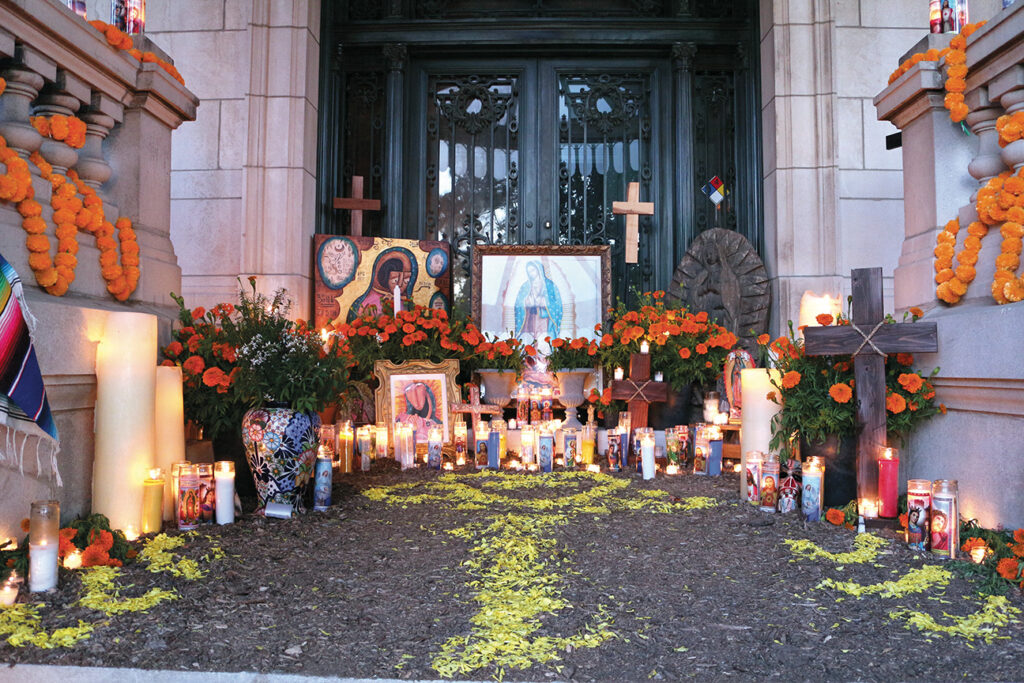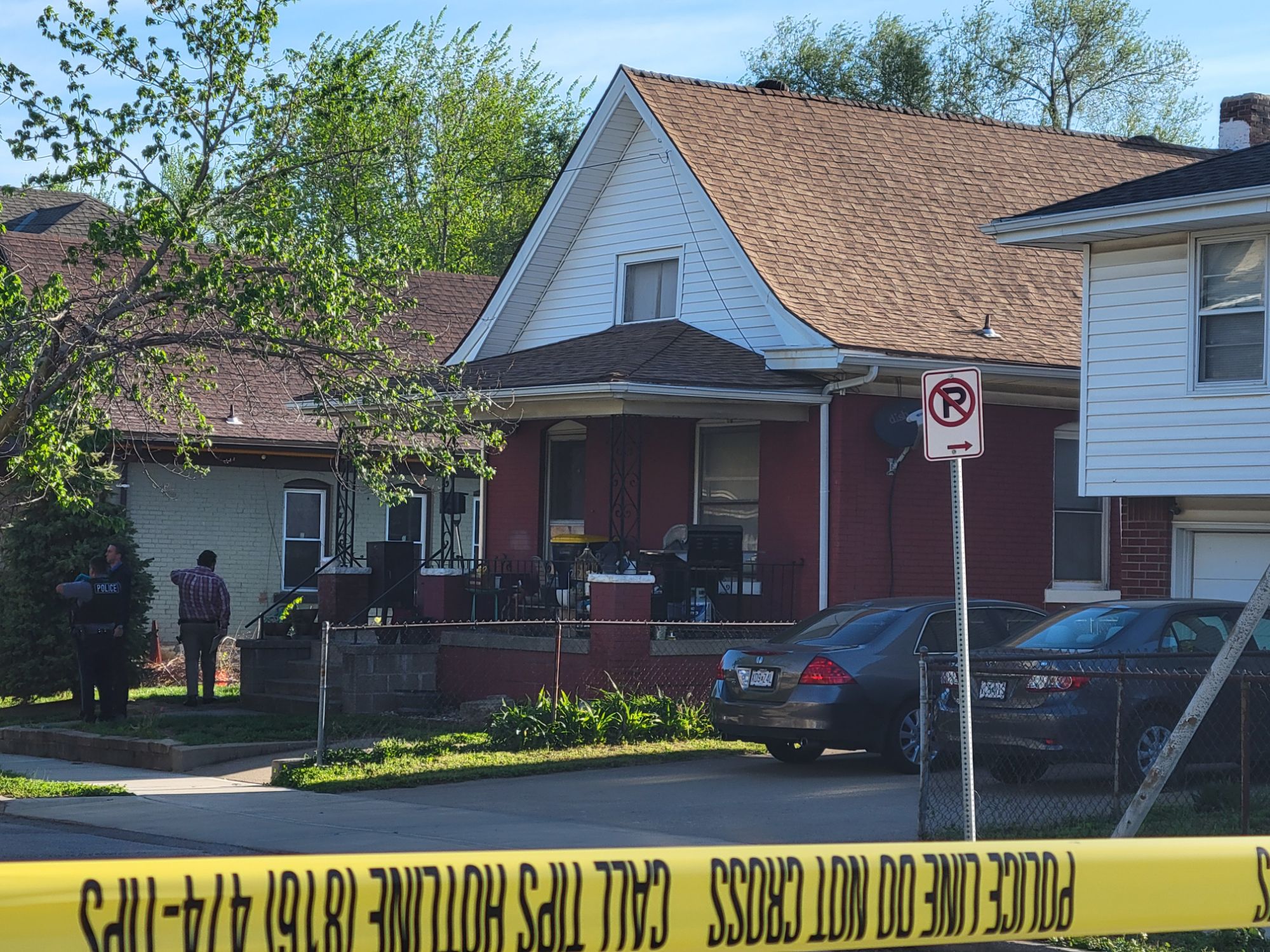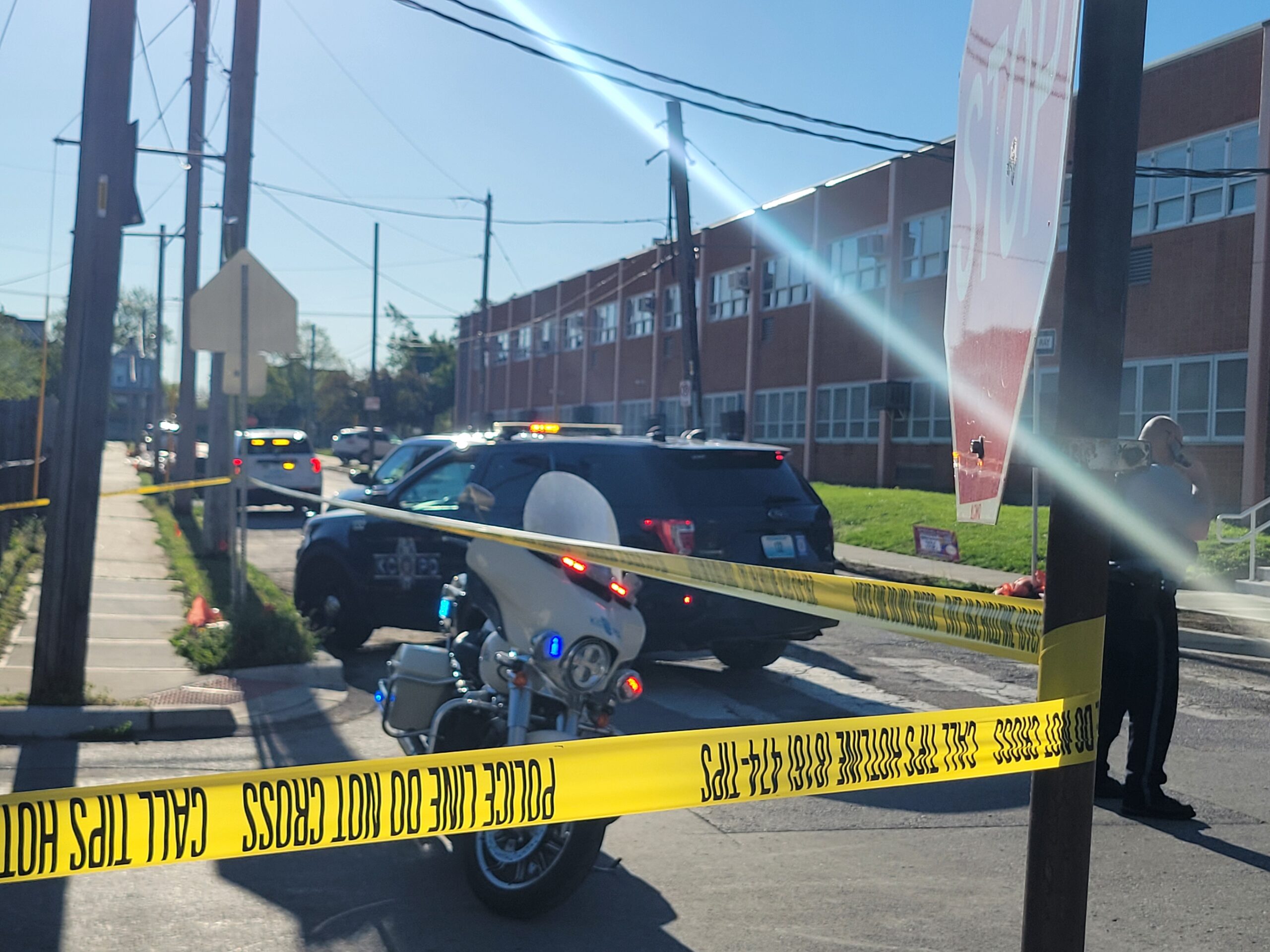
Abby Hoover
Managing Editor
Like many events this year, the Kansas City Museum’s 7th Annual Día de los Muertos, or Day of the Dead, celebration looked a little different. But no matter the circumstances, the meaning behind one of the most important Mexican holidays is unwavering.
“I think it’s important to just continue with the traditions that we have with everything still uncertain in this world right now,” Director of Programs & Events Paul Gutièrrez said. “People are looking for something normal that they’re accustomed to.”
El Día de los Muertos, although close to Halloween, is very different in meaning and tone. It is a time for families to welcome home the souls of their deceased relatives for a reunion that includes food, drink, and celebration.
The holiday, which has evolved into a blend of Mesoamerican ritual, European religion and Spanish culture, is celebrated each year from Oct. 31 through Nov. 2. While Oct. 31 is Halloween, Nov. 1 is el Dia de los Innocents, or the Day of the Children, and All Saints Day. Nov. 2 is All Souls Day, or el Día de los Muertos.
The museum’s Day of the Dead celebration, which took place this past weekend, featured an altar viewing, one of the essential pieces to the holiday. This year the ofrenda, or altar, which was set up on the west porte-cochère at Corinthian Hall, is dedicated to those who have lost their lives to COVID-19.
“Usually when you build an altar, the theme is to a loved one, someone who has passed,” Gutièrrez said. “This one would be for those who have lost their lives. It will be a general altar overall, no names, just a symbol of all the lives lost in the U.S. so far, which I think we’re at 210,000.”
The museum partnered with the Mattie Rhodes Art Center, TICO Productions, Crossroads Hotel and Hitched Planning and Floral, as well as a live mariachi band that played while people visited the altar. When the mariachi weren’t playing, a church bell soundscape set the mood.
The museum’s socially distanced altar viewing was on Thursday and Friday evenings, and Saturday from 3 to 9 p.m. at 3218 Gladstone Blvd. Advance reservations were required for the free event to allow for safe distancing, and all three days were at capacity.
“I thought it was really important to offer something, even though it’s a safe distance and small. It’s more intimate and I think that might be the new way we’re doing programming, honestly, for a good while,” Gutièrrez said, adding that they are taking full advantage of digital programming.
Guests wore face coverings, sanitized their hands upon entering and practiced social distancing while viewing the altar. After contactless check-in, guests entered the museum grounds and followed the path up to the altar, where they had a few minutes to take in the different elements and honor loved ones who have passed. They then exited, allowing enough space for the next reservation, and collected a Day of the Dead craft activity to create at home.
Usually, the organizers provide an opportunity for visitors to write a note to leave at the altar, but due to health precautions, Gutiérrez said people brought a message they prepared in advance or left a photo or momento.
The altar faced Kessler Park where the museum has hosted its Day of the Dead celebration in the past. Although the activities, food trucks and entertainment have been put on hold, Gutiérrez hopes next year the festivities will return better than ever. Now that the exterior renovations are complete at Corinthian Hall, the celebration can be brought inside the museum’s gates.
“It’s grown a lot,” Gutiérrez said. “The first few we did, we only had a few hundred people show up. Last year we had a little under 5,000 show up on that Sunday afternoon where we activated Kessler Park.”
This year, Gutiérrez said the museum focused on providing something meaningful for the community to connect with in a safe way. He took inspiration from local groups and those celebrating the holiday in other countries. Jenny Mendez, the Director of Cultural Arts at the Mattie Rhodes Center, works with Gutiérrez to build the altar every year.
Depending on which state they are from or family traditions, Mexicans have specific ways to set up the altar. While in some regions the elements are on a flat surface, oftentimes they have several levels. The museum’s altar had many levels because it was created on a set of stairs.
Gutiérrez spent last Wednesday painstakingly unwrapping and preparing thousands of fresh marigolds, which are a key component to the altar. Their potent scent is thought to guide the spirits and invoke remembrance.
Candles are an essential part of the altar as the flames are said to guide the spirits back. On the museum’s altar, Our Lady of Guadalupe and crosses were also included. Even in the elements of the altar, the blending of Mesoamerican traditions and Catholicism can be found.
Janet McGuire, lead docent and educator at the museum, spent last week creating dozens of large tissue paper flowers to border the walkway leading up to the altar.
Traditionally, the altar is a place to leave offerings for the deceased, oftentimes including favorite Mexican dishes and pan dulce, or sweet bread, salt to purify the spirits, water to quench their thirst, and sugar skulls to represent a departed soul.
Gutiérrez said they made the decision to create a more traditional, rustic altar this year, especially since it was the first time they’ve had a nighttime altar viewing. Their altar had monarch butterflies hidden throughout because their annual migration, which often coincides with the holiday, represents the spirits coming back to Mexico.
“We’ll also have copal incense burning tonight, that’s another symbol to attract the spirits back,” Gutiérrez said Friday. “Jenny did a yellow path [with marigold petals] so that kind of guides the spirits to the altar.”
Day of Dead is a celebration of life, rather than a time of mourning, Gutiérrez explained. He said similar to Memorial Day, families often visit the graves to clean them up, bring food and remember their departed family members.
Gutiérrez begins planning the altar and Day of the Dead celebration a year in advance, and he said this year it took him and Mendez more than 5 hours just for the assembly. He said since Northeast has such a rich history of immigrants and Mexican heritage, it is important to have a Day of the Dead celebration right here.
For those interested in diving deeper into the traditions and significance of the Day of the Dead altars, Mendez will host a presentation on Wednesday, Oct. 21 from 6 to 7:30 on Facebook Live.
This presentation is part of the Restore KC program, and will provide an opportunity to understand how families are celebrating this rich and colorful tradition during these uncertain times. Three local families will share the altars for their loved ones and talk about the tradition and significance of creating and displaying altars, especially during the pandemic.
Many may have seen the skull-style face painting that normally pops up around Day of the Dead, but may not know the meaning behind it. Artist and educator Jessica Manco hosted a virtual face painting demonstration on Saturday, Oct. 17, on Facebook Live.
The Restore KC program’s upcoming events can be found on the museum’s website, kansascitymuseum.org.



















